Thunderbolt on Windows Part 2: Intel's DZ77RE-K75 & ASUS' P8Z77-V Premium
by Anand Lal Shimpi on June 3, 2012 2:08 AM EST- Posted in
- Motherboards
- CPUs
- Intel
- Asus
- Thunderbolt
- Ivy Bridge
- Chipsets
Performance
In our earlier look at Thunderbolt under Windows I didn't have a working Pegasus driver to really push the limits of the interface's bandwidth. With that now changed, I went to work. I started by pulling out all of the hard drives from the Pegasus R6 and installed four SSDs. I didn't have four identical drives so I threw in a mix of SF-2281 based drives and Vertex 4s. The lowest common capacity was 240GB so the resulting logical RAID-0 drive I built was just under 1TB in size. I then ran a 128KB sequential read test using Iometer to see what sort of performance I could get from the setup:
With this configuration, I achieved a very respectable 922MB/s. Note that the fastest speed I ever attained under OS X was 1000MB/s so we're not all that far off the peak. To try and move the needle a little further I hooked up the SSD based LaCie Little Big Disk and performed a 128KB sequential read across both the LBD and the SSD equipped Pegasus:
Performance moved up a bit to 933MB/s but it's clear that we should've seen a bigger increase in performance from adding another two SSDs to the chain. The fact that performance didn't go up tells me that we're reaching the limits of the interface.
As a last ditch effort I added two more SSDs to the Pegasus R6 chassis, a pair of 128GB Samsung SSD 830s in RAID-0. I repeated the 128KB sequential read test, but now across all four drive targets (2 in the LBD, and 2 RAID arrays in the Pegasus R6):
Unfortunately, performance didn't change. It's safe to say that on a single Thunderbolt port you can get just under 7.5Gbps of bandwidth, in one direction, to a chain of devices. Each Thunderbolt port should have two channels however; the second should allow DisplayPort traffic to be carried without impacting performance. To test this theory I repeated the test but with Apple's Thunderbolt Display in the chain. To drive the 27-inch 2560 x 1440 panel at 60Hz you need around 7Gbps of bandwidth (more if you take into account overhead). With the display connected I repeated the transfer test:
Performance actually went up by a few MB/s, but basically remained unchanged from the earlier 7.5Gbps peak. While I never was able to hit the 8Gbps I got under OS X, that was with the very first iteration of Thunderbolt support under OS X as well as from Promise. It's entirely possible that further tuning/firmware updates have limited performance a bit since then. Either way, it's safe to say that Thunderbolt under Windows is capable of the same class of performance we've seen under OS X.
Pushing video out to the display while pulling in data from external storage devices is actually the best case scenario for Thunderbolt, but what happens if we're sending traffic out on both channels? I conducted the same test with the Thunderbolt Display attached but this time I ran a 128KB sequential write to the attached SSDs:
There's a bit of a performance drop (~6.9Gbps vs. 7.5Gbps) but it's unclear whether this is due to lower SSD write speeds or upstream bandwidth limitations for a single Thunderbolt port.
Final Words
Armed with the right drivers, Promise's Pegasus helped prove that Thunderbolt can be nearly as fast under Windows as it is under OS X. Similar to what we saw under OS X, around 7.5Gbps isn't tough to achieve over a single Thunderbolt port. There's also no significant performance impact seen when driving DisplayPort over the same interface.
The first Thunderbolt equipped motherboards are expensive, but that's mostly a function of Thunderbolt being paired with the absolute highest end models. Over time, I'd expect more ubiquitous deployment of the interface—although it's not clear how long that would take.
Intel's certification program for Thunderbolt on Windows definitely improves the behavior of devices and generally makes the interface OS agnostic. Unfortunately, the reliance on the certification program for proper functionality under Windows means the interface will get off to a rough start on its new platform. As of today, there are no publicly available certified Windows drivers for Thunderbolt devices. This will change, hopefully over the course of the next quarter, but we still need to play a bit of the waiting game.
We also need more Thunderbolt devices. Apple's Thunderbolt Display is a great example of what you can do with Thunderbolt, but without official Windows support we're left waiting again.
Despite the teething problems, I am glad to see Thunderbolt finally arrive on Windows PCs. While there's an obvious fit for mobile, I do believe that even desktop users can benefit from Thunderbolt. At the bare minimum, it can simplify external cable management with only a single cable carrying Ethernet, audio, USB, DisplayPort, etc... from your PC to your Thunderbolt hub and/or display. The fact that it can also move high performance storage out of your chassis might also enable smaller/more interesting desktop form factors. There's an obvious fit with all-in-one designs but even things like mini-ITX become a lot more flexible with Thunderbolt.


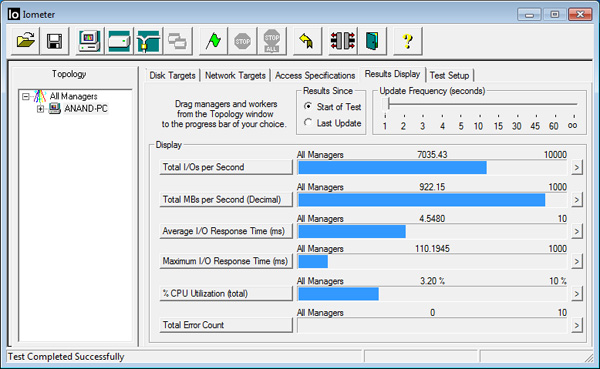
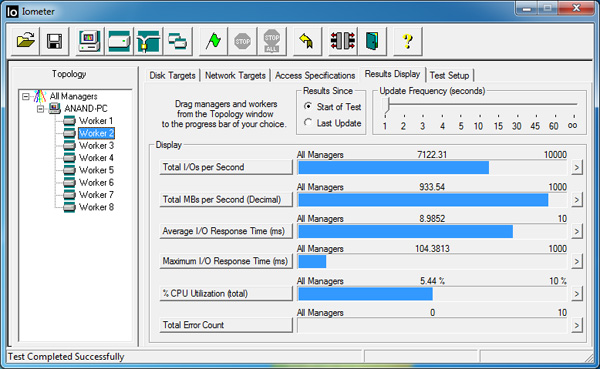
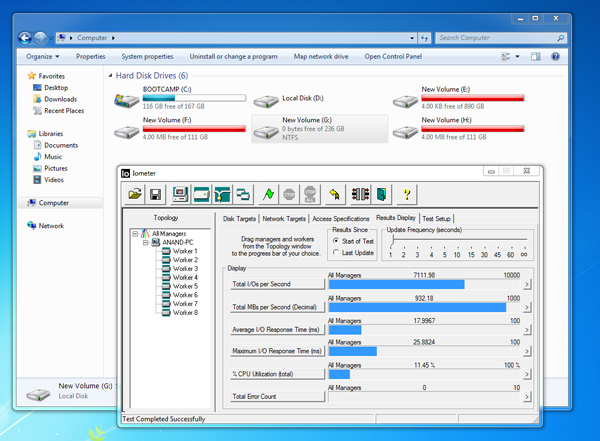
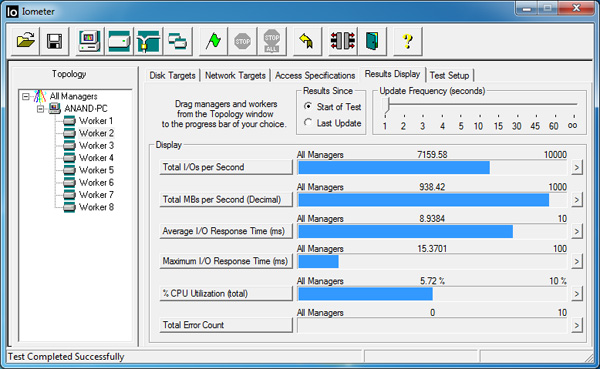
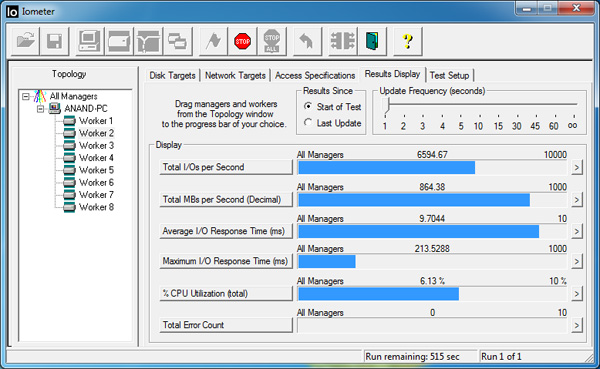
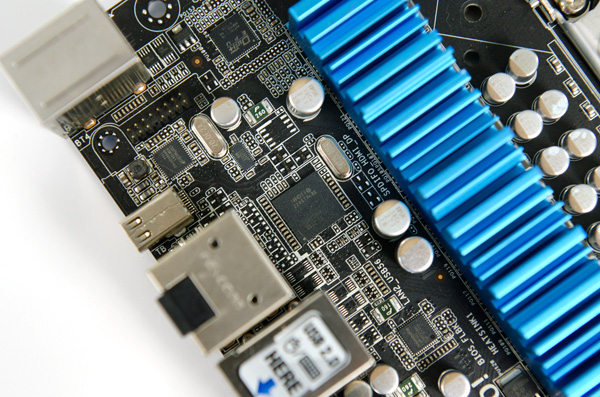
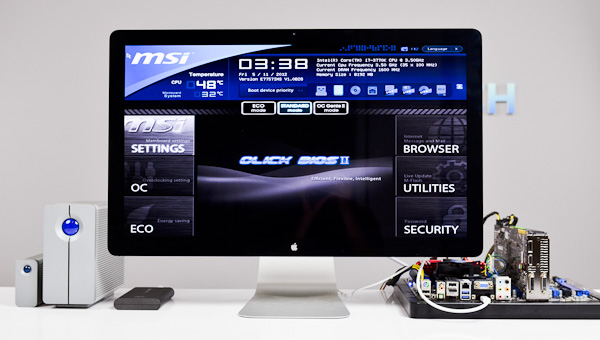
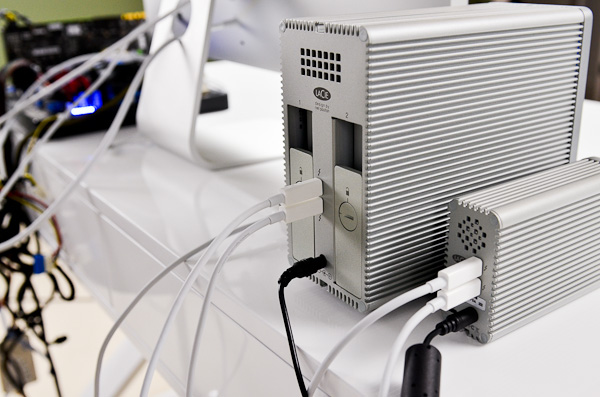








116 Comments
View All Comments
mikbe - Sunday, June 3, 2012 - link
So it's a non-standard standard that even one of the creators refuses to follow. Sounds really useful.I'll wait till they figure it all out; as I imagine most people will. Which of course means it won't ever get popular enough to drop in price so it will be expensive and flacky which will keep people away so it won't ever get popular enough to drop in price so it will be expensive and flacky which will keep people away so it won't ever get popular enough to drop in price so it will be expensive and flacky which will keep people away so it...
coder543 - Sunday, June 3, 2012 - link
what do you mean one of the creators refuses to follow?Impulses - Sunday, June 3, 2012 - link
Frankly I don't see wide spread adoption of TB on the desktop ever taking root... The cable management argument is debatable (i wouldn't want most cables hanging off my displays), and other applications simply cater to usage cases that are already a niche.TB does hold a ton of promise as a docking solution for laptops tho, I certainly hope Intel stands by it and doesn't grind progress to a halt with the cert program. You'd think this would be the prefect complement to their ultrabook push, they should practically be giving the controllers away to ultrabook manufacturers.
chaoflux - Sunday, June 3, 2012 - link
Could you by chance test whether two thunderbolt displays daisy chained works w/ the Intel or Asus motherboard? I have two displays which work fine daisy chained on my mbp w/ os x, but not bootcamp (only 1 display works in bootcamp) - though hot plugging doesn't work either w/ bootcamp on the mbp, so I'm moderately curious if one of these Intel certified boards resolves the dual display in Windows issue as well.repoman27 - Sunday, June 3, 2012 - link
Curious about this as well, but there's also a good possibility that these boards only use the 2C Cactus Ridge controller or only have a single DP source connected anyway.counter03 - Sunday, June 3, 2012 - link
for asus p8z77-v premium, is it support three independent displays using Ivy bridge? i mean just connect three monitors to hdmi and dp and thunderbolt on board.repoman27 - Monday, June 4, 2012 - link
I'm not sure if I just missed it, but it was not clear to me which board you were using for the performance figures that were in the article. Was it the Asus or Intel board that was used for the benchmarks?Also, a much more plausible explanation for the modest performance decrease experienced during your Windows tests is that the 15-inch MacBook Pro you originally tested with had the Thunderbolt controller connected to the PCIe lanes coming directly off of the CPU, not the PCH. On that test you were very close to the theoretical maximum throughput of 1028 MB/s (figuring a 128 byte max TLP payload size and bare minimum of overhead.) Trying to get higher aggregate throughput with multiple Thunderbolt devices only works to a point, and then the additional overhead created by multiple devices starts to diminish the bandwidth available for payload data. If you're trying to bury the needle, I think the Pegasus on its own loaded with 4 matched high performance SSDs is the way to go for now.
I chuckled when I read this bit: "Interfaces like USB are great because you can generally count on anything that physically fits in the port just working." I'm guessing you don't plug printers into your USB ports very often, do you?
ypsylon - Monday, June 4, 2012 - link
Thunderbolt will die virtually over night when external PCI-Express will be introduced. It will be MUCH cheaper, it won't involve patent rights and license buyouts gibberish, it will offer the same bandwidth, and most important ALL desktops are equipped with PCI-Ex lanes already. Need only a simple card with a connector without some proprietary idiocies. In short couldn't care less about Thnunderbolt, leave it for Apple - to use euphemism - followers. It will end like Firewire. The End.bottlething - Monday, June 4, 2012 - link
Anand, in your Thunderbolt Display review, you mentioned the possibility of combining the ethernet-port on the display with the Mac's ethernet-port (IEEE 802.3ad Link Aggregation).This link explains how:
http://docs.info.apple.com/article.html?path=Serve...
- What is to be expected of this scenario? (given a local network with a IEEE 802.3ad-compliant switch)
A similar question on Apple Communities have yet to be replied upon..
https://discussions.apple.com/message/17450524#174...
- Any thoughts/experiences/results on this "feature" would be appreciated :)
Thanks in advance
Shadowmaster625 - Monday, June 4, 2012 - link
My CAD program would choke and die if it tried to make a curved trace.Leaving external GPUs aside, what purpose is there to having thunderbolt? You guys dont ever seem to review any docking solutions, but it seems like the new Toshiba Dynadock USB 3.0 can drive two 1080p display and run ethernet and sound and mouse/kb. Right now I would still have to pay more money to use a thunderbolt one-cable dock solution.